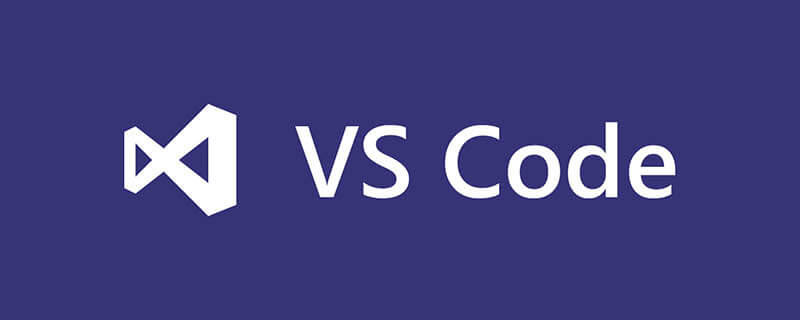 Backend Development
Backend Development C#.Net Tutorial
C#.Net Tutorial What are the common application scenarios of !x in C language?
What are the common application scenarios of !x in C language?The purpose of !x in C language is not limited to inverse: logical judgment: whether it is 0 is simpler than x == 0. Control program flow or represent status: use 0 and non-0 to represent true or false. Bit operation: Quickly invert all bits (use with caution).

The mystery of !x in C language: It's not just a simple reverse
You ask !x do in C? On the surface, it is just a logical non-operator, turning true into false and false into true. But in fact, it plays much more tricks in C language and is more exquisite than you think. In this article, I will take you to dig deeper into the various application scenarios of !x , especially those details and potential pitfalls that are easily overlooked. After reading it, your understanding of !x is definitely not just as simple as "negation".
First of all, we need to be clear: in C language, the result of !x is a Boolean value, either 0 (false) or 1 (true). But don't forget that there is no special boolean type in C (although now there is _Bool , many old codes don't use it). 0 represents false, and any non-0 value represents true. This laid the foreshadowing for the wonderful use of !x .
The most common one is of course logical judgment. for example:
<code class="c">int x = 0; if (!x) { printf("x is zero!\n"); // 这句话会执行} int y = 10; if (!y) { printf("y is zero!\n"); // 这句话不会执行}</code>
There is nothing to say about this, it is just the basic logic. But have you noticed it? !x actually completes the function of "judging whether x is 0". This is in many cases more concise than x == 0 and more in line with certain programming habits.
But more advanced usage is hidden in the clever use of 0 and non-0. For example, you can use !x to control the program flow, or as the return value of the function to represent a certain state.
Imagine you wrote a function to check if the file exists. Returning 0 means the file does not exist, and returning other values (such as file size) means the file exists. You can use this !x :
<code class="c">int fileExists(const char *filename) { // ... some file checking logic ... if (/* file exists */) return fileSize; //返回文件大小else return 0; //返回0 } int main() { int result = fileExists("my_file.txt"); if (!result) { printf("File not found!\n"); } else { printf("File exists, size: %d bytes\n", result); } return 0; }</code>
Note that here !result does not directly determine whether the file size is 0, but determines whether the function return value is 0, that is, whether the file exists. This is a very common technique to use 0 and non-0 to represent states.
Of course, !x also has some potential pitfalls. The most common thing is that when using !x for floating point numbers, you may get some unexpected results. Because the comparison of floating-point numbers is different from integers, precision issues may lead to some incorrect judgments. Therefore, it is best to use explicit comparison operators (such as x == 0.0 ) to avoid the potential uncertainty caused by using !x .
Also, in positional operations, !x can also play some strange roles, although it is not used much. It can quickly invert all bits of an integer (note that this is different from the complement operation). But be careful, this usage is more confusing, so unless you are very familiar with the bitwise operations, try to avoid it.
In short, !x is an operator that seems simple in C but actually contains rich skills. Proficient in how it is used can allow you to write more concise and elegant code. But at the same time, you should also pay attention to its potential pitfalls and avoid errors during use. Remember, the essence of programming is not how complicated the techniques are used, but how clear, easy to understand and efficient code is written.
The above is the detailed content of What are the common application scenarios of !x in C language?. For more information, please follow other related articles on the PHP Chinese website!
 (超详细)VScode中配置C语言环境的方法Dec 05, 2022 pm 07:05 PM
(超详细)VScode中配置C语言环境的方法Dec 05, 2022 pm 07:05 PMVScode中怎么配置C语言环境?下面本篇文章给大家介绍一下VScode配置C语言环境的方法(超详细),希望对大家有所帮助!
 c语言中node是什么意思Jul 06, 2022 pm 03:51 PM
c语言中node是什么意思Jul 06, 2022 pm 03:51 PM在C语言中,node是用于定义链表结点的名称,通常在数据结构中用作结点的类型名,语法为“struct Node{...};”;结构和类在定义出名称以后,直接用该名称就可以定义对象,C语言中还存在“Node * a”和“Node* &a”。
 c语言怎么将数字转换成字符串Jan 04, 2023 pm 03:20 PM
c语言怎么将数字转换成字符串Jan 04, 2023 pm 03:20 PMc语言将数字转换成字符串的方法:1、ascii码操作,在原数字的基础上加“0x30”,语法“数字+0x30”,会存储数字对应的字符ascii码;2、使用itoa(),可以把整型数转换成字符串,语法“itoa(number1,string,数字);”;3、使用sprintf(),可以能够根据指定的需求,格式化内容,存储至指针指向的字符串。
 c语言开根号运算符是什么Mar 06, 2023 pm 02:39 PM
c语言开根号运算符是什么Mar 06, 2023 pm 02:39 PM在c语言中,没有开根号运算符,开根号使用的是内置函数“sqrt()”,使用语法“sqrt(数值x)”;例如“sqrt(4)”,就是对4进行平方根运算,结果为2。sqrt()是c语言内置的开根号运算函数,其运算结果是函数变量的算术平方根;该函数既不能运算负数值,也不能输出虚数结果。
 c语言数组如何初始化Jan 04, 2023 pm 03:36 PM
c语言数组如何初始化Jan 04, 2023 pm 03:36 PMC语言数组初始化的三种方式:1、在定义时直接赋值,语法“数据类型 arrayName[index] = {值};”;2、利用for循环初始化,语法“for (int i=0;i<3;i++) {arr[i] = i;}”;3、使用memset()函数初始化,语法“memset(arr, 0, sizeof(int) * 3)”。
 c语言合法标识符的要求是什么Aug 27, 2020 pm 01:47 PM
c语言合法标识符的要求是什么Aug 27, 2020 pm 01:47 PMc语言合法标识符的要求是:1、标识符只能由字母(A~Z, a~z)、数字(0~9)和下划线(_)组成;2、第一个字符必须是字母或下划线,不能是数字;3、标识符中的大小写字母是有区别的,代表不同含义;4、标识符不能是关键字。
 c语言中源文件编译后生成什么文件Nov 23, 2022 pm 07:44 PM
c语言中源文件编译后生成什么文件Nov 23, 2022 pm 07:44 PMc语言编译后生成“.OBJ”的二进制文件(目标文件)。在C语言中,源程序(.c文件)经过编译程序编译之后,会生成一个后缀为“.OBJ”的二进制文件(称为目标文件);最后还要由称为“连接程序”(Link)的软件,把此“.OBJ”文件与c语言提供的各种库函数连接在一起,生成一个后缀“.EXE”的可执行文件。
 c语言可以处理的文件类型是什么Sep 19, 2022 pm 03:53 PM
c语言可以处理的文件类型是什么Sep 19, 2022 pm 03:53 PMc语言可以处理的文件类型是:文本文件和二进制文件。C语言所能够处理文件是按照存放形式分为文本文件和二进制文件:1、文本文件存储的是一个ASCII码,文件的内容可以直接进行输入输出;2、二进制文件直接将字符存储,不能将二进制文件的内容直接输出到屏幕上。


Hot AI Tools

Undresser.AI Undress
AI-powered app for creating realistic nude photos

AI Clothes Remover
Online AI tool for removing clothes from photos.

Undress AI Tool
Undress images for free

Clothoff.io
AI clothes remover

AI Hentai Generator
Generate AI Hentai for free.

Hot Article

Hot Tools

WebStorm Mac version
Useful JavaScript development tools

mPDF
mPDF is a PHP library that can generate PDF files from UTF-8 encoded HTML. The original author, Ian Back, wrote mPDF to output PDF files "on the fly" from his website and handle different languages. It is slower than original scripts like HTML2FPDF and produces larger files when using Unicode fonts, but supports CSS styles etc. and has a lot of enhancements. Supports almost all languages, including RTL (Arabic and Hebrew) and CJK (Chinese, Japanese and Korean). Supports nested block-level elements (such as P, DIV),

Dreamweaver CS6
Visual web development tools

PhpStorm Mac version
The latest (2018.2.1) professional PHP integrated development tool

MinGW - Minimalist GNU for Windows
This project is in the process of being migrated to osdn.net/projects/mingw, you can continue to follow us there. MinGW: A native Windows port of the GNU Compiler Collection (GCC), freely distributable import libraries and header files for building native Windows applications; includes extensions to the MSVC runtime to support C99 functionality. All MinGW software can run on 64-bit Windows platforms.





